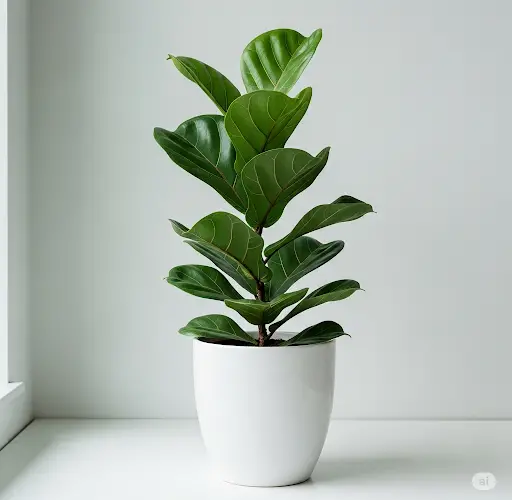Houseplants bring life and color into any indoor space—but getting them to thrive, grow lush foliage, and produce vibrant flowers can be a challenge. Many plant lovers struggle with yellowing leaves, leggy stems, or flowering plants that refuse to bloom altogether.
The good news is there’s a simple and natural way to breathe life into any indoor plant, from flowering geraniums to leafy ferns. Just one spoonful of a nutrient-rich natural mixture, applied at the base of your plant, can dramatically transform it into a lush, blooming beauty.
This article explores the natural solution that’s helping countless home gardeners rejuvenate tired houseplants, stimulate flowering, and encourage healthy green growth—without synthetic chemicals or expensive treatments.
Why Houseplants Stop Blooming
Indoor plants can be surprisingly sensitive to their environment. Even a well-cared-for plant can become stressed if it’s lacking essential nutrients or if its soil becomes depleted over time. The most common reasons houseplants stop blooming or lose their vibrant green leaves include:
-
Nutrient-deficient potting soil
-
Irregular watering schedules
-
Insufficient light exposure
-
Lack of seasonal feeding
-
Root crowding or stale substrate
Most of these issues can be corrected with better care—but boosting your plant’s nutrition is the fastest and most effective way to get quick results.
The One-Spoon Natural Fertilizer That Works
This easy homemade fertilizer is made from ingredients you likely already have at home. It offers a gentle, balanced nutrient profile that helps restore the soil and give plants the nourishment they need to grow strong, healthy, and full of blooms.
Ingredients:
-
1 tablespoon of wood ash or finely crushed eggshells
-
1 teaspoon of honey or sugar
-
1 teaspoon of aloe vera juice or pulp (optional but highly beneficial)
-
1 liter of room-temperature water
What Each Ingredient Does:
-
Wood ash or eggshells: Rich in potassium and calcium, these help build strong stems and support flowering. Potassium also boosts color intensity in both leaves and flowers.
-
Honey or sugar: Feeds the beneficial microbes in the soil and provides a small energy boost to the plant, encouraging new growth.
-
Aloe vera: Contains natural plant hormones and micronutrients that enhance root function, immune strength, and overall vitality.
How to Prepare and Use:
-
Mix the ingredients thoroughly in a jug or watering can.
-
Let the solution rest for 30 minutes so the nutrients can infuse into the water.
-
Shake or stir again before applying.
-
Pour about 100–150 ml of the solution at the base of each houseplant, being careful to avoid directly wetting the leaves.
-
Apply once every 10–14 days for best results.
This solution is suitable for flowering houseplants like geraniums, hibiscus, African violets, and peace lilies, as well as foliage plants like pothos, dracaena, and monstera.
What Results You Can Expect
After the first two applications, many plants show noticeable improvements:
-
Leaf color deepens to a richer, more vibrant green
-
Stems become firmer and upright
-
New growth appears from leaf joints and root bases
-
Flower buds form more readily, with blossoms lasting longer
-
Plants that had appeared dormant or sluggish begin to perk up visibly
Even houseplants that have been struggling or have gone without care for weeks can respond quickly to this treatment. It’s especially effective during spring and summer, when most indoor plants are in active growth.
Additional Tips for Lush Growth and Blooms
To enhance the effectiveness of this natural fertilizer:
-
Ensure proper lighting: Place blooming plants near windows with bright, indirect sunlight.
-
Rotate your pots weekly so that all sides receive even exposure.
-
Check soil moisture: Avoid both underwatering and soggy soil. Use your finger to test before watering.
-
Repot when needed: If roots are crowded, fresh soil and more space can dramatically boost growth.
-
Wipe leaves: Dusty leaves can block light—wipe them gently with a damp cloth every few weeks.
Why Natural Feeding is Better
Unlike synthetic fertilizers, which can cause nutrient buildup and even burn roots, this natural mixture works in harmony with your plant’s biology. It enriches the soil without upsetting its microbial balance, which is essential for healthy root function and long-term plant vitality.
Plus, it’s safe for use in homes with pets and children, and it leaves no chemical residue.
Final Thoughts: One Spoonful to Transform Your Indoor Garden
Indoor flowers don’t need to be a mystery—or a struggle. Sometimes, all it takes is a single spoonful of the right nourishment to awaken their natural beauty and potential. Whether your goal is lush greenery, fragrant blooms, or simply healthier plants, this easy natural remedy can be the boost your houseplants have been waiting for.
Try it on one plant first, and in just a few weeks, you may find yourself inspired to treat your entire indoor garden to this revitalizing routine. The transformation can be truly astonishing.



